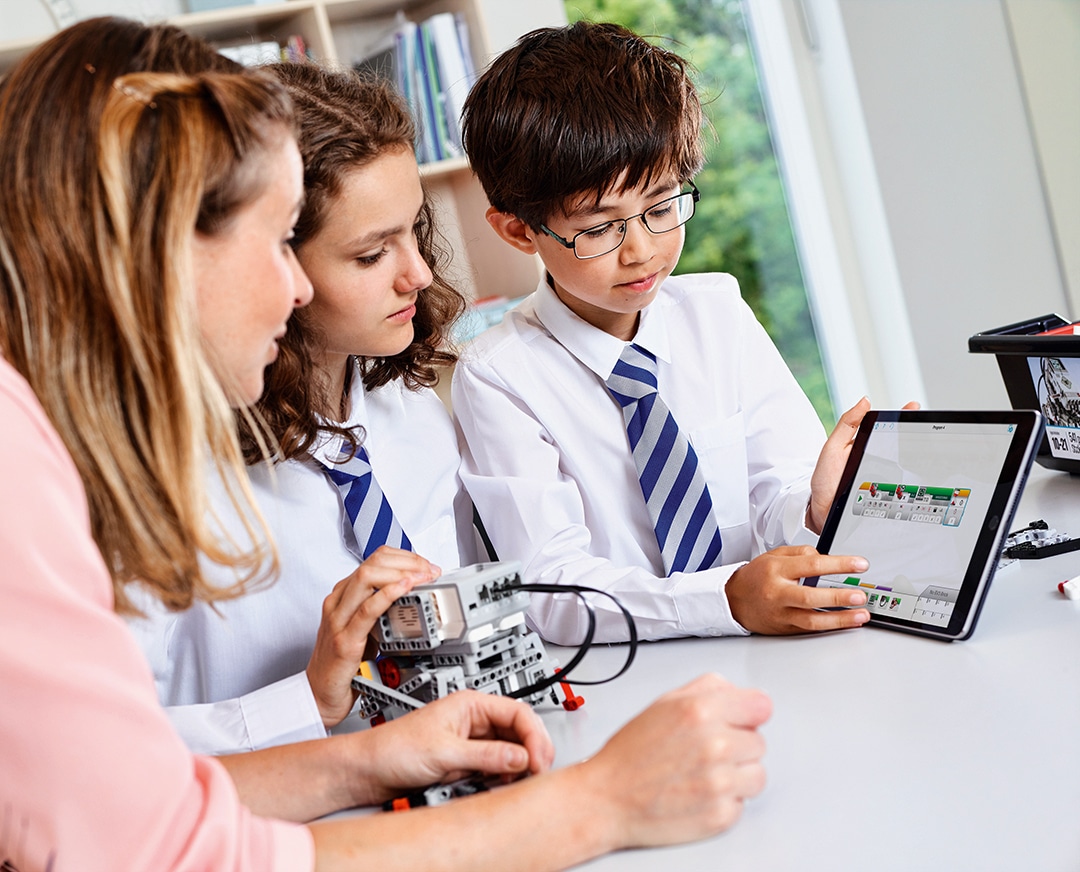LEGO® MINDSTORMS® has actually been around since 1985. The Massachusetts Institute of Technology (also the creators and distributors of Scratch programming – they know their computing stuff!) and the LEGO® Group came together to provide a way to learn through building. Together, they developed the ‘Grey Brick’ which would become a teaching resource. It took some time before the LEGO® MINDSTORMS® you see today was released, but in September 1998, classrooms the globe over were introduced to a way incorporating LEGO into programming.
What actually is LEGO MINDSTORMS?
Okay, so you’ve had a whistle-stop tour of the history, but what actually is LEGO MINDSTORMS? Well, put simply, Lego Mindstorms is a classroom LEGO set that uses the well-known bricks as well as lesser-known software that can be used to create programmable robots. LEGO is popular with kids and their familiarity with LEGO bricks helps them to jump straight into the creation of robots. The software used to program LEGO robots is simple for pupils and teachers alike to use to animate robots, making the teaching and learning of programming easy, effective, and enjoyable.
LEGO® MINDSTORMS® EV3 is the third generation of the programming with LEGO kit for classrooms; it’s the most recent and up-to-date set.
What are the benefits of LEGO MINDSTORMS?
The main benefit of LEGO® Education has always been to fully immerse children in the learning experience; to give them hands-on, physical activities that ignite creativity.
LEGO MINDSTORMS enables pupils to use project-based learning to improve their problem-solving and teamwork skills. Introducing a deeper knowledge of computer science and STEM worlds, LEGO MINDSTORMS technology can be used in the classroom immediately. The kit includes all the bricks you need to make a series of robots and the software is really easy to use, even for non-specialist computing teachers dipping their toes into programming.
The benefits of teaching coding and programming are far-reaching; problem-solving skills that are so often needed for mastery maths, as well as real-world coding skills, are two of the main benefits. But, creativity, logical thinking, and collaboration skills are also of huge benefit when building coding robots.

How to use LEGO MINDSTORMS
Created with simplicity and ease-of-use in mind, the software that comes with the LEGO® MINDSTORMS® EV3 kit uses drag-and-drop programming which pupils will already be familiar with from early coding experience with Scratch or, possibly with LEGO kits aimed at younger pupils like the LEGO® SPIKE® series. Intuitive and perfect for building simple code, students can sharpen their skills confidently until they are ready to step up to more complex algorithms.
As soon the pupils are at the level where they can transfer their learning to more complex coding languages, you can introduce EV3’s MicroPython programming language. MicroPython is a stepping-stone to the real-world programming language of Python, a valuable and in-demand skill in workplaces of the future.
How much is LEGO MINDSTORMS EV3?
LEGO® MINDSTORMS® EV3 is a whole series of products and cost anywhere from under £10 for individual blocks or modules to anywhere over £1,000 for complete class sets and add ons.
Take a look at Hope Education’s LEGO® MINDSTORMS® EV3 range or browse the entire LEGO Education range we have on offer.






